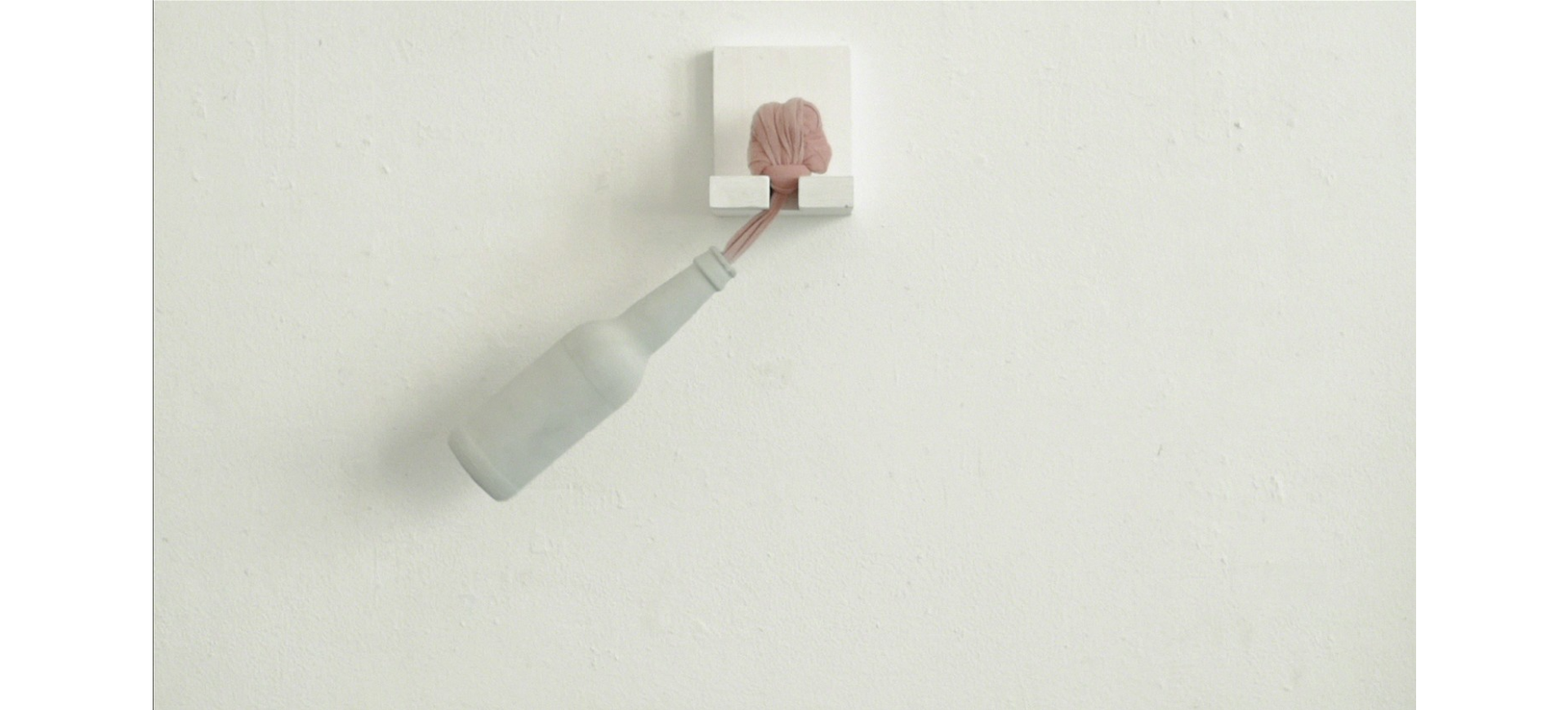
Lungiswa Gqunta, Wait For It… (2016)
Zeitz Museum of Contemporary Art Africa
Chosen by: Koyo Kouoh, executive director and chief curator
Lungiswa Gqunta has, in her practice, an incredible talent for condensing—for concentrating very loaded themes into a visual language that brings out the essence of her position. Wait for It… (2016) is a minimalistic work. It’s a silent video, projected directly onto the wall of the gallery and played on a 10-minute loop, showing a bottle, with a pink stocking coming out of it, swinging like a pendulum. It’s mesmerizing, hypnotic—and it captures a sense of tension. I always feel like the work takes you to an edge, a place where you might fall or explode—though you never do.
But there are also clear references to protest and violence. The Molotov cocktail is a globally recognizable object from recent protests in South Africa, such as Rhodes Must Fall. The visual reference here places the work in the context of post-apartheid tensions. The stocking brings to mind conversations about gender; the pendulum is a reference to time and weight, to the back and forth of life. Gender-based violence remains a horrifying issue in South Africa. When the title of this work asks us to Wait for It…, I think what we’re waiting for are all the unrealized promises of liberation from apartheid.
Lungiswa was a founding member of a powerful, female artist collective, iQhiya, which also includes exceptional artists such as Bronwyn Katz and Sethembile Msezane. They were influenced by what I might call the second wave of political art in South Africa—inspired by work of artists such as Tracey Rose—so there is a continuity here in these artists’ engagement in the post-apartheid condition, and on feminist positions for articulating it.
I believe we can expect more great art to come from Lungiswa—I am curious to see how her aesthetics and her political reckoning with herself develops. With Wait for It…, she has achieved something unique—a work that encapsulates the tensions in the country, a work that puts you on edge, that forces you to reckon with the pervasive violence in South African society while remaining generative. In destruction, you can also have a sense of regeneration.
—Koyo Kouoh, Zeitz Museum of Contemporary Art Africa executive director and chief curator, as told to Samuel Reilly.